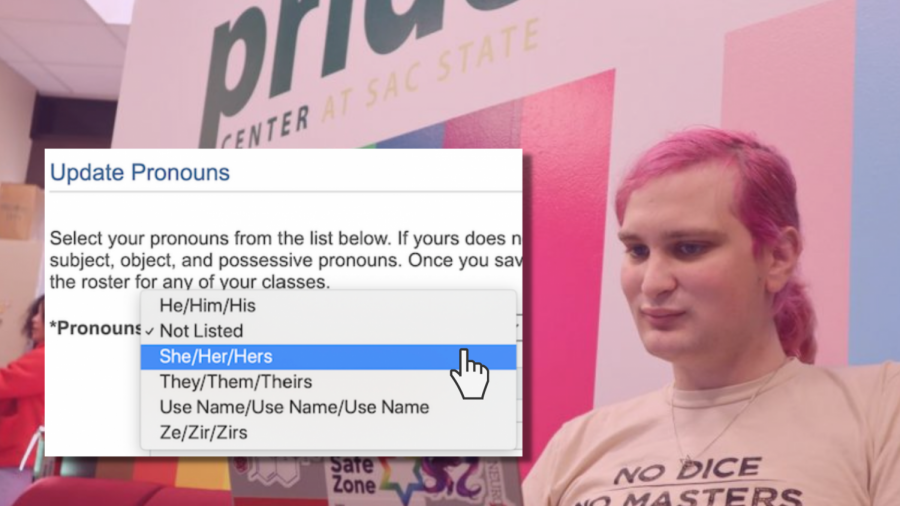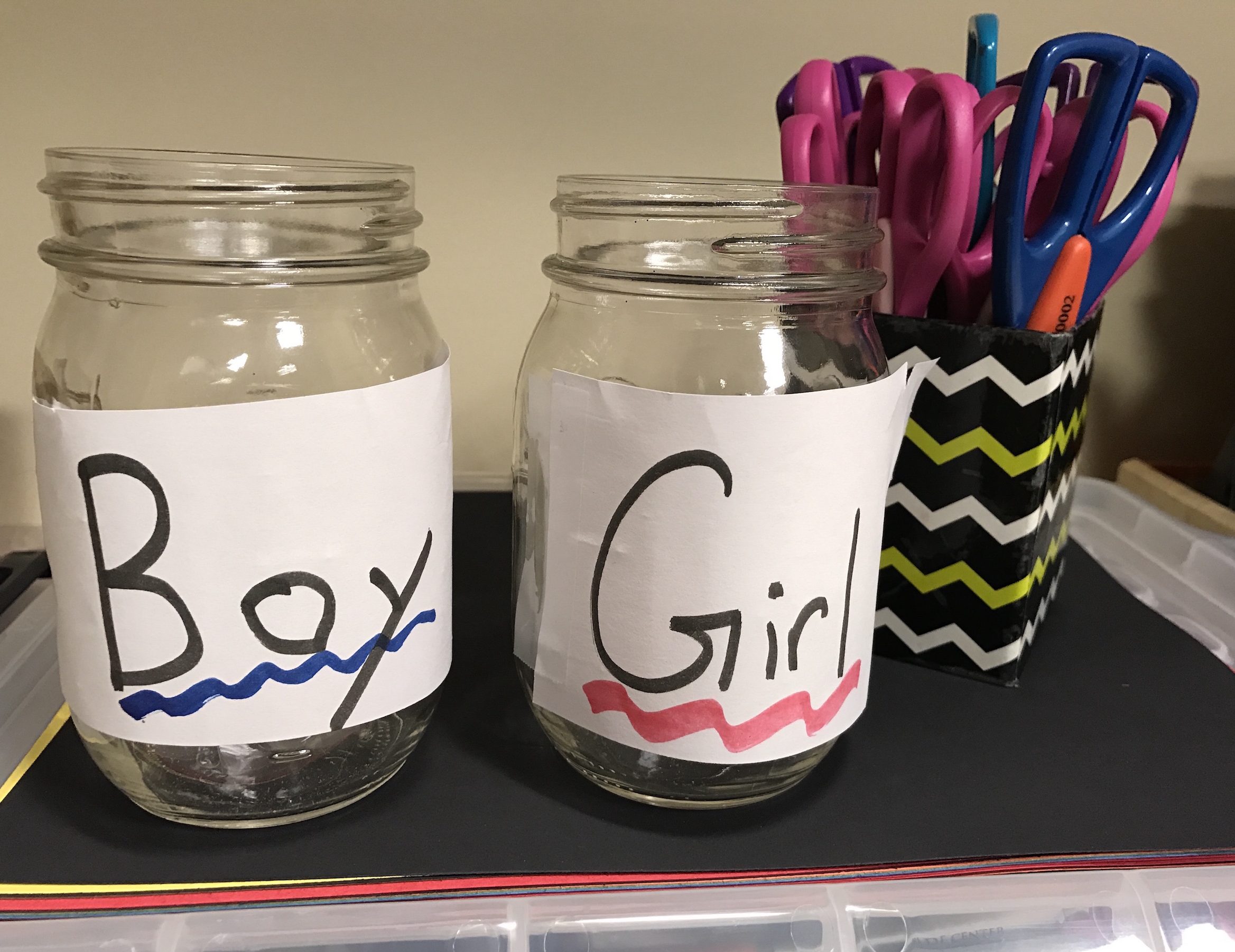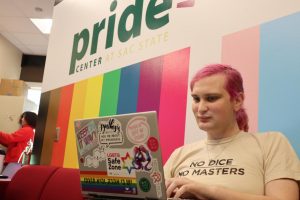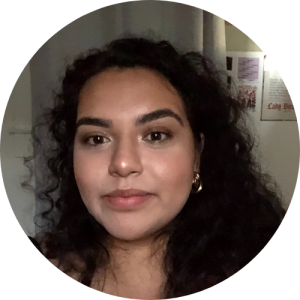FAQ: How to add your pronouns to your Student Center
Sacramento State’s Division of Inclusive Excellence announced that Sac State students, employees, faculty and administration are allowed to choose their gender pronouns that are displayed on their Student Center and profile pages. The State Hornet compiled this FAQ about pronouns and LGBTQ+ inclusivity at Sac State. (Photo by Kayleen Carter.)
May 19, 2021
Sacramento State students, employees, faculty and administration are now allowed to choose their pronouns that are displayed on their Student Center and profile pages to others, according to a SacSend email from Sac State’s Division of Inclusive Excellence on May 3.
The State Hornet compiled this FAQ about pronouns and LGBTQ+ inclusivity at Sac State.
Q: What is gender identity?
A: According to the Trevor Project, gender identity is a person’s internal sense of what their gender is. Someone’s gender identity can be different from the sex they were assigned at birth, and it can also fall outside of the male-female binary.
Because a person’s gender identity may differ from their birth-assigned sex, and because the way a person expresses themselves with their appearance does not determine their gender, using a person’s correct pronouns allows for a more inclusive environment.
Q: What are pronouns and why are they important?
A: Pronouns refer to the words people use when referring to others. Pronouns that are commonly used to refer to people are she and her, he and him, they and them.
“Assuming or mistaking someone’s pronouns can send a potentially harmful message: that people must look a certain way to demonstrate the gender that they are or are not,” the email from the Division of Inclusive Excellence said.
Melissa Muganzo, coordinator at Sac State’s PRIDE Center, has been with Sac State for approximately 10 years and said the decision to include people’s pronouns on Student Center and Canvas is long overdue.
“Pronouns just help to open up that conversation and force people to say ‘Before I give you a gender identity, even if I’m not intentionally trying to, but before I even get there, let me ask,’ right?” Muganzo said. “I love it. I think it’s important, and I think what folks of color have done since the introduction of pronouns is they’ve added their own cultural spin to it.”
Muganzo’s pronouns are she/they/sis, which means she goes by she/her/hers and they/them/theirs pronouns, and she goes by sis with other Black women as a form of community solidarity. She said that she has also seen people also use Spanish pronouns to indicate that they’re multilingual.
They said the decision to allow the Sac State community to select their pronouns on Student Center and Canvas shows solidarity to non-binary and transgender people, and it causes people to think about the way people have been conditioned to look at people and assume their gender.
Q: How can a Sac State student select their pronouns to be displayed?
A: Students interested in selecting their gender pronouns can log onto their Student Center page. Under the “Personal Information” category, students can scroll through the dropdown menu and select “Pronouns.” Students have the option to select a set of gender pronouns from a dropdown list or type in their own. Once the pronouns are saved, pronouns will appear alongside the student’s name on Canvas and on class rosters.
Q: What pronouns are available for selection?
A: The pronouns available for selection in the drop-down list are:
- She/her/hers
- He/him/his
- They/them/theirs
- Ze/Zir/Zirs
- Name use only, where a person is referred to by only their first name instead of using pronouns
Students can also type in their own pronouns instead of choosing from the above list.
Q: Is adding pronouns mandatory?
A: No, students, faculty, staff and administrators now have the option to add their gender pronouns. Not everyone may be comfortable or feel safe enough about sharing their gender pronouns, so selecting gender pronouns is optional.
Q: How can faculty select their pronouns?
A: Faculty are able to select their gender pronouns through the Canvas website. Under the individual’s personal account settings, faculty can go to “Edit Settings.” Pronouns are only able to be selected through a dropdown menu and are not customizable. After clicking “Update Settings,” pronouns will appear next to the faculty’s name on Canvas.
Q: How can staff and administrators select their pronouns?
A: Staff and administrators are allowed to add their pronouns in their Meet Us webpages for their individual colleges, divisions and departments.
Q: What resources does Sac State provide for students and faculty who want to learn more about gender identity?
A: Sac State’s PRIDE Center is available for one-on-one appointments that can be set up through social media, according to Muganzo. Students can reach the Pride Center via direct message on their Instagram account, @sacstatepridecenter, as well as on their Twitter account, @sacstatepride.
Muganzo also said the center hosts Weekly Queer Connect events every Wednesday virtually from noon to 1 p.m. where people can attend without their camera or audio to hang out with others. People can also attend the center’s three hour Safe Zone Training that is free and available to any student or employee who may want to learn about gender identity.
Muganzo also said she recently started a newsletter for the PRIDE center and that they’re looking forward to allyship training in the summer.
The Division of Inclusive Excellence has resources available on its website as well, according to Diana Tate Vermeire, the division’s vice president.
Q: Will faculty and staff be able to view student’s pronouns?
A: Yes, student pronouns will be visible on Common Management System pages such as class rosters and advising center summary pages. The Division of Inclusive Excellence created a visual guide to show where students’ pronouns can be found.
Q: What restrictions are there for putting in pronouns?
A: The list of gender pronouns entered by students will be regularly monitored, and offensive and inappropriate pronouns will be removed by the university, according to the division’s FAQ page about pronouns. A person can change their pronouns as much as they would like.
Q: How can Sac State continue to create an inclusive campus for all gender identities?
A: Vermeire told The State Hornet via email that Sac State needed to continue investing in its commitment to inclusive excellence and antiracism by:
- dedicating resources to “build capacity” of centers at Sac State
- improving administration’s policies and practices
- recruiting and retaining faculty and staff from marginalized identities
- increasing ongoing learning and literacy with respect to diversity, equity, inclusion and antiracism throughout campus.
Vermeire said that the Division of Inclusive Excellence has been advocating for a bias response coordinator position at Sac State to aid students who have been confronted by discrimination and prejudice. Ed Mills, vice president of student affairs at Sac State, said Sac State is currently hiring for the role.
“The bias response director will engage directly with individuals who have experienced bias incidents on campus and will work to implement proactive programming to prevent such incidents and respond when they occur,” Vermeire said. According to her, this includes implementing restorative justice programming, healing circles and educational programming.
Muganzo said they think the next thing that Sac State needs to continue to do is introduce students to more career pipelines and pathways for people who are interested in diversity, equity and inclusion work. Muganzo said people should be able to see that they can continue their work through master’s degrees, bachelor’s degrees, professional roles, directing roles and other jobs so people don’t second guess their career path in diversity and inclusion.
“I think that’s the next level of conversation and luckily, our women and gender studies department on campus is on that route,” Muganzo said.
Muganzo said visibility is an important step in helping all the centers on campus. They said it should not be difficult to find the information of centers for marginalized communities on campus.
She said the Division of Inclusive Excellence’s web page should have links to all the cultural centers available on campus and all class syllabi should include where the cultural and inclusion centers are on campus as well. They also said administration should focus on expanding the centers currently available on campus.







































































































































